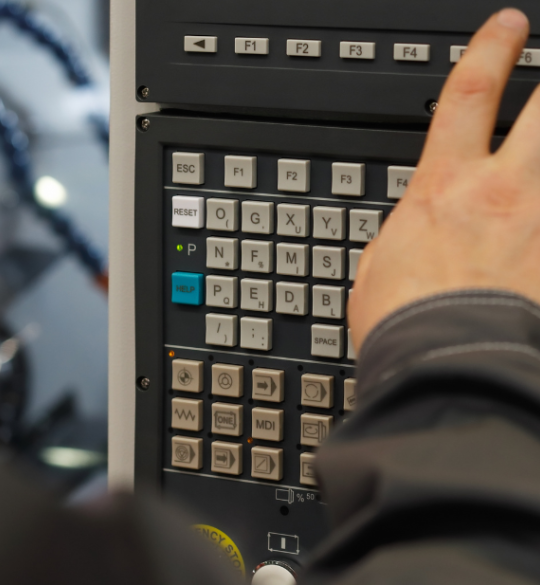 Workplace safety is one of the most essential priorities for all employees in the industry. Regardless of the kind of business, size and industry, all workers expect to have a protected and safe environment. It promotes the wellness of all people working, and lowers the risk of danger for anyone on the premises.
Workplace safety is one of the most essential priorities for all employees in the industry. Regardless of the kind of business, size and industry, all workers expect to have a protected and safe environment. It promotes the wellness of all people working, and lowers the risk of danger for anyone on the premises.
Even the smallest details matter when it comes to workplace safety. This means that everyone should abide by regulations and rules, such as wearing mens scrubs, helmets, safety goggles, boots, etc., to properly handle equipment and measure everything accurately.
Without these measures, the company’s revenues, employees, brand, customers and investors are all in potential danger. Most of all, failing to teach workers the right workplace safety regulations can lead to accidents, minor injuries, hospitalization or even death.
Reasons Why Workplace Safety Is Important
All companies must have safety risk management procedures to help handle the dangers that workers face every day. Human loss is immeasurable; not only does it affect the company, but the workers’ families as well. Here are some of the top reasons to provide more information on why workplace safety is essential.
- It helps to reduce workplace stress.
One of the main reasons why you need to have workplace safety measures is to provide a safe and wholesome environment for all employees. The workers will feel more comfortable and at ease doing their jobs, ensured that they can do so safely. A less-stressful workplace allows workers to be more productive and focused on their tasks, which benefits the company.
It shows your workers that you care about them, and it builds their confidence in your management. Any good relationship requires trust, and this includes the working world. You must have your employees’ faith to maximize activity and create a strong workflow.
- It can increase employee satisfaction.
A healthy and safe workplace safeguards your most valuable assets: employees. It shows the workers that you care for their wellbeing, and you’re ensuring their safety from an extensive range of workplace dangers. By doing so, you will face fewer issues such as injuries and fatalities within the workplace. It prevents not only the loss of lives, but also the loss of respect from your subordinates.
You can keep insurance claims at bay if you minimize risk. Accidents lead to several insurance claims, which put an alarming dip in a company’s bottom line.
Most of all, a workplace with proper safety regulations reduces absenteeism in employees. It creates a productive environment where workers are more active and focused. If you have a safe working environment, people can work without getting injured, and that means fewer people will miss their working hours in recovery.
- A safe workplace makes you aware of your surroundings.
A safe environment gives you a better scope of your employees, ongoing work, potential dangers and room for improvement. By ensuring workplace safety, you can spot potential harm and help to avoid significant problems by immediately addressing the situation.
It will also help you to become aware of any improvements you can make to optimize the working environment for you and your workers. You’ll see which aspects you’re lacking in, and take the appropriate actions to make sure that you correct this.
How You Can Prevent Accidents

There are many ways in which you can ensure your workers’ safety and prevent harmful accidents. Here are some of the top tips you should heed to protect your workforce.
- Keep the workplace clean.
Don’t overlook this simple rule. It’s a must for your workers to have an uncluttered, clean working area for comfortable maneuverability. The neatness of the workplace can increase or decrease the risk of injury, as physical obstacles make your workers more prone to hazards.
Avoid these hazards by ensuring that workplaces remain clean. If someone is done with equipment, make sure to put it away and store it properly. If any cables or cords are lying around, get rid of them to avoid tripping accidents. If there are any spills around the working area, clean them as soon as possible. Simple things matter when it comes to ensuring a safe environment; keeping the space clean helps your workers to become more productive and remain safe from injury.
- Perform pre-placement physical exams.
Accidents can also happen if you set a task to an unsuitable employee. Ensure that you do a thorough check on your workers before slotting them into certain positions. Screen your applicants, and check their physical abilities to see whether they’re fit for the job they’re applying for or not. Will you hire a small, thin man for heavy-lifting jobs or a strong worker who has experience lifting heavy equipment? What if the stronger worker has cardiac problems? There’s a lot to consider, so make sure that your decisions are well-informed.
- Provide the right protective gear for your workers.
It’s essential to provide your workers with the equipment they need to perform tasks safely. Always have a budget for protective gear, as it helps to ensure the wellbeing of your employees at work. With proper safety equipment, exposure to possible danger is minimized.
Make sure that every worker wears their protective gear while working, monitoring, testing and under any other circumstances where they may be exposed to danger. Make the time to teach your employees the importance of safety equipment, and the appropriate way use it. Some of the most essential safety paraphernalia include:
- Goggles
- Boots
- Suits
- Face shields
- Gloves
- Hard hats
- Earplugs or earmuffs
Proper training is essential for your workers. Do not expose them to a working environment without formal training and information, unless you want accidents later on.
A healthy and safe workplace is not only beneficial for your workers, but for the entire company standing as well. Prioritize your workers’ health, safety and satisfaction to receive an effective and positive response. Do not risk any safety issues, and fill the gaps as well as possible to limit the hazards within your workspace. Although accidents happen despite preparation, you can still determine the dangers and make sure that you’re ready to respond to any emergency situation.







